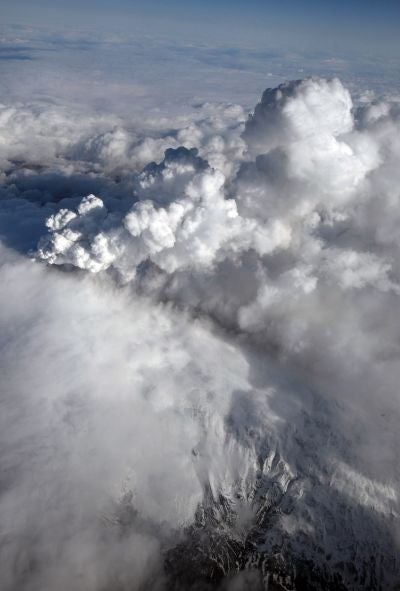'Right' to shut down air space over Iceland volcano: study

The ash cloud from Iceland's Eyjafjoell volcano eruption last year was indeed dangerous to aircraft and authorities were right to carry out the planet's largest air space shutdown since World War II, the head of a Danish-Icelandic research team said Tuesday.
"Aviation authorities were really flying blind. They didn't know (but they) luckily made the right decision," said Susan Stipp, a professor at the Nano-Science Centre at the University of Copenhagen.
"The (ash) particles were small so they went high and far. They were sharp, so they were a danger to airplane windows. It's like sand-blasting the airplane. And they were small and could melt at temperatures common in jet engines ... and could cause failure," she told AFP.
Stipp and her team published, along with an University of Iceland group led by professor Siggi Gislason, a study in the US-based Proceedings of the National Academy of Sciences (PNAS) journal detailing the dangers posed by the Eyjafjoell ash cloud.
"Concerns for air transport were well grounded," the study concludes.
The study also provides a protocol for quickly determining the menace posed by ash from future eruptions.
"Within 24 hours we ... can give (authorities) the information they need to make a better judgment of the dispersion of the particles (and) to find out if the ash is going to kill the airplane or just be an annoyance," Stipp said.
On April 14, 2010, Eyjafjoell erupted, pushing out a plume of ash that rose to heights of up to 9,000 metres (nearly 30,000 feet).
Wind pushed the ash southeast and by evening it had reached the skies over Norway, which promptly closed its airspace for fear the fine ash would clog up aircraft engines and reduce visibility.
The next day alone, more than 10 European countries followed suit in grounding all flights, and Eyjafjoell ended up wreaking havoc in European skies for almost a month, cancelling more than 100,000 flights and affecting more than 10 million travellers.
Many at the time voiced scepticism that the crippling air space closures were necessary, and so far authorities have had difficulties saying the Eyjafjoell ash was particularly dangerous.
The problem with the Eyjafjoell eruption, according to the researchers, was that it happened under a glacier, bursting through 200-300 metres of ice.
It was the "interaction between the cold water and the hot magma that made the particles really tiny," Stipp said.
While airplanes fly around in dust all the time, authorities can monitor the day-to-day wear and tear that causes, she pointed out.
"But if you are flying through an ash cloud, the intensity goes up fast and you can't monitor it, and it could cause a problem while there are people there," she stressed.
nl/rdm/ga
Join our commenting forum
Join thought-provoking conversations, follow other Independent readers and see their replies
Comments
Bookmark popover
Removed from bookmarks